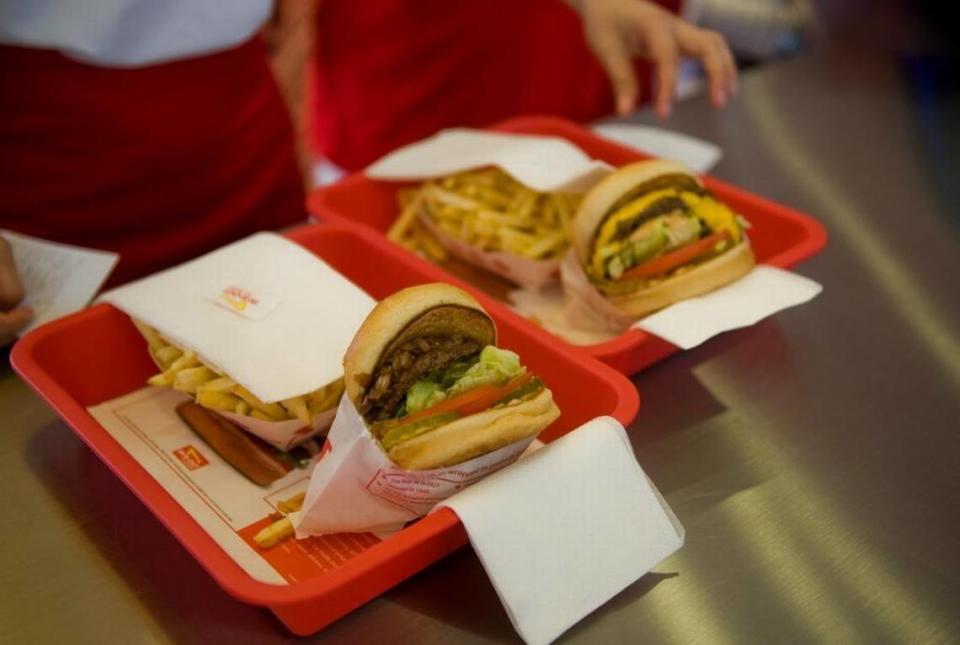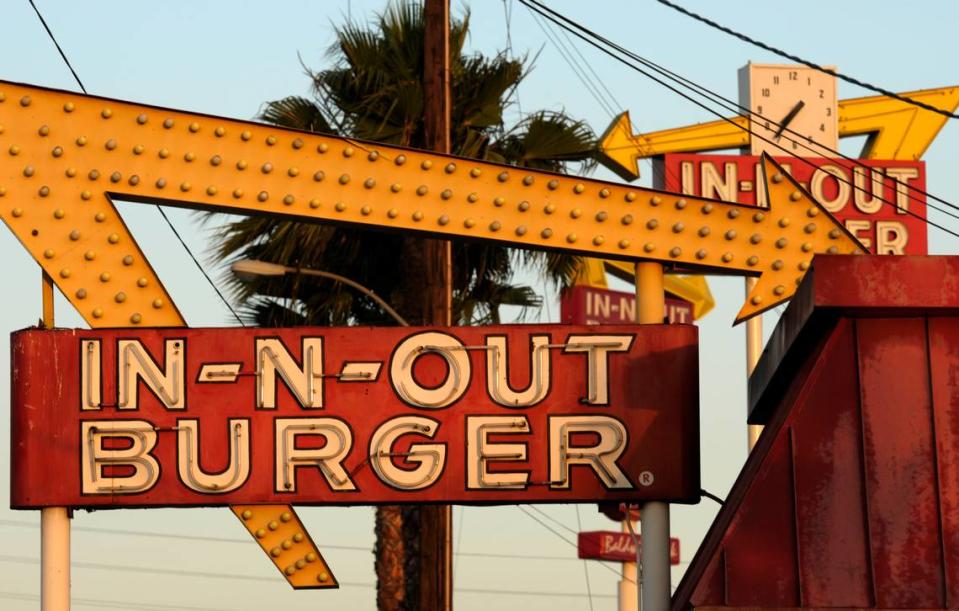In-N-Out raised prices in California amid minimum wage hike. How much do burgers cost now?
- Oops!Something went wrong.Please try again later.
People in California can expect to pay more for burgers and shakes at In-N-Out.
On April 1, the Irvine-based fast food chain raised its prices across the Golden State in response to California’s new minimum wage increase for fast food workers, Chief Operating Officer Denny Warnick wrote Thursday in an email.
The starting wage at In-N-Out locations in California is $22 to $23 an hour.
On April 1, the minimum wage at fast food chains with more than 60 locations nationwide jumped to $20 an hour.
That’s the highest minimum wage in the United States restaurant industry and $4 more than other sectors.

How much does an In-N-Out burger cost now in California?
In an April interview with NBC’s “Today” show, In-N-Out President Lynsi Snyder vowed to keep menu prices the same.
“I was sitting in VP meetings going toe-to-toe saying, ‘We can’t raise the prices that much. We can’t,’ ” Snyder told NBC. “Because I felt such an obligation to look out for our customers.”
Despite Synder’s assurances, prices at In-N-Out have gone up.
The cost of food and drinks fluctuate depending on which In-N-Out location you visit.
Customers can expect to pay 25 to 50 cents more for a Double-Double, a burger with two beef patties and two slices of cheese, plus French fries and a drink, Warnick said.
On Friday, a Double-Double, French fries and a medium drink cost $10.45 at an In-N-Out location in Natomas. An 8.9% tax bumped the total to $11.36.

What is N-In-Out? Where are restaurant locations?
Founded in the late 1940s, In-N-Out describes itself as California’s original burger stand with the “freshest ingredients available.”
The fast food chain sells hamburgers, cheeseburgers, fries and milkshakes, as well as soda and lemonade.
On Friday, prices at a Natomas In-N-Out ranged from $3.60 for a hamburger to $5.90 for a Double-Double.
An order of French fries cost $2.30.
Chocolate, strawberry and vanilla shakes were available for $3 apiece.
It’s probably most known for the items not listed on the regular menu.
In-N-Out’s “Not So Secret Menu” includes grilled cheese sandwiches and lettuce-wrapped burgers.
Also available are burgers served “animal style” with lettuce, tomato, pickles, extra spread and grilled onions.
“We’re all about making our customers happy,” In-N-Out wrote on its website.
In-N-Out has more than 400 locations across the nation.
How has minimum wage increase affected restaurants?
A new study from foot traffic analytics platform Placer.ai reveals an increase in menu prices has had a direct correlation with decreased customer foot traffic.
“It’s early, but we’re starting to see the ripple effect of the minimum wage increase across the broader restaurant industry,” R.J. Hottovy, Placer.ai head of analytical research, wrote in a June 7 article titled “Measuring the Impact of California’s Minimum Wage Increase on Restaurants.”
According to the study, popular fast food chains including McDonald’s and Chipotle have underperformed since California increased minimum wages for workers.
Other businesses have ceased operations altogether.
On June 1, Rubio’s Coastal Grill permanently closed nearly 50 locations across California and filed for bankruptcy, citing “significant increases” to California’s minimum wage.
A total of 13 locations closed in San Diego, 24 in the Los Angeles area and 11 in the northern portion of the state, according to a news release.
“While painful, the store closures are a necessary step in our strategic long-term plan to position Rubio’s for success for years to come,” company representatives wrote in the release.
“The closings were brought about by the rising cost of doing business in California.”
What do you want to know about life in Sacramento? Ask our service journalism team your top-of-mind questions in the module below or email servicejournalists@sacbee.com.

